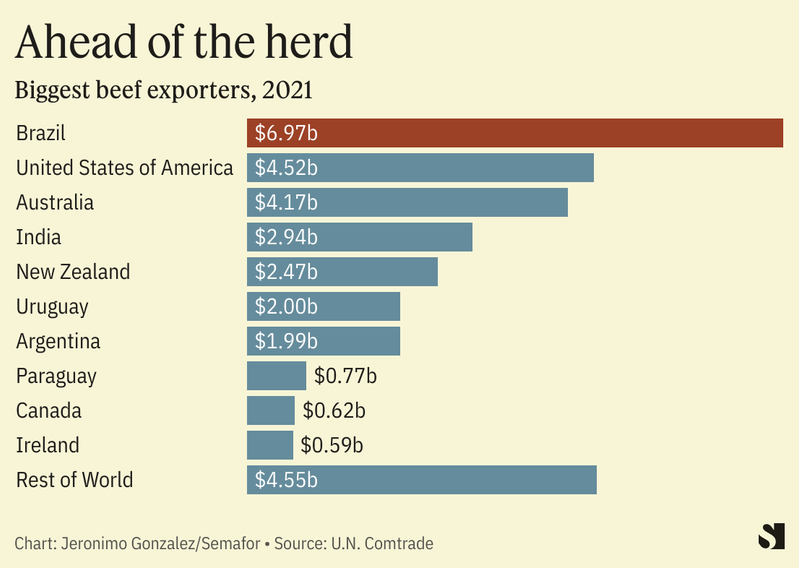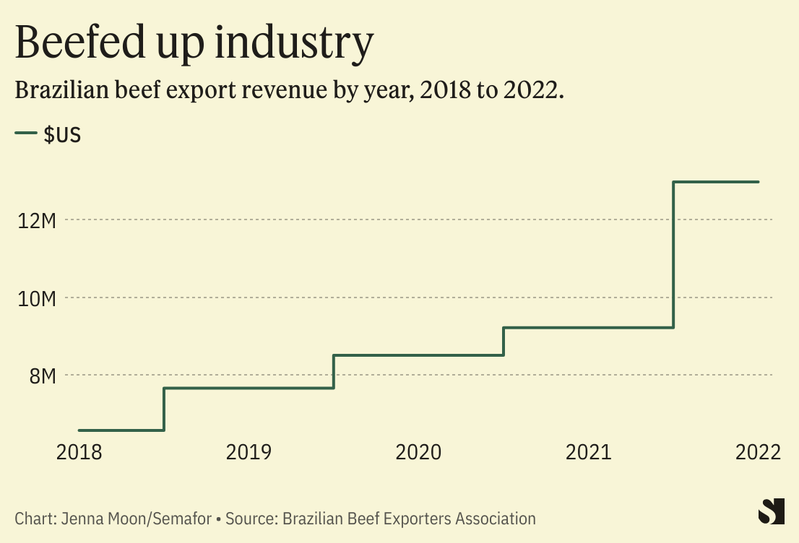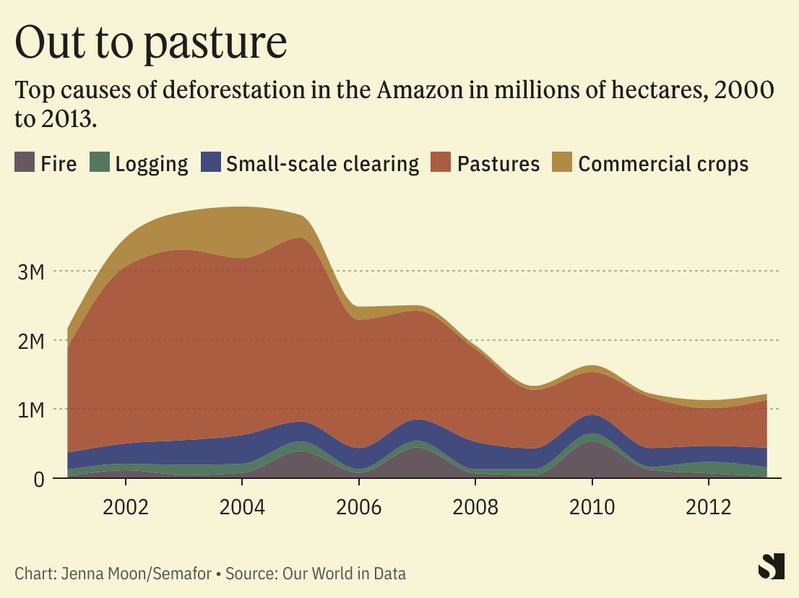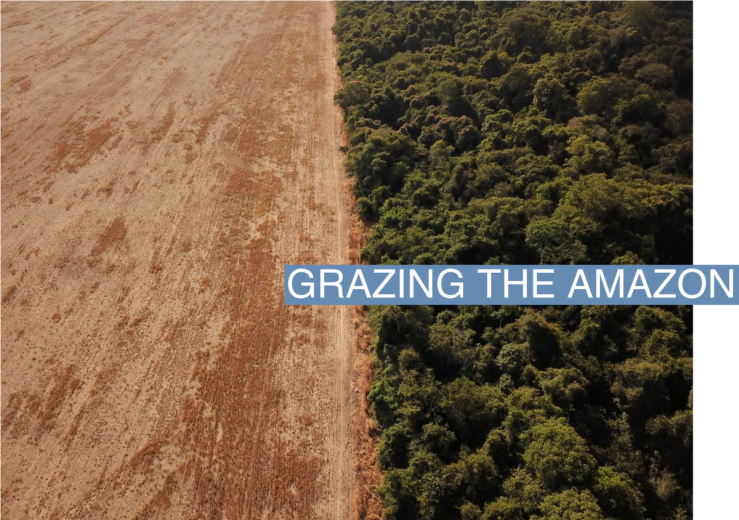The News
Brazil is struggling to reduce deforestation as its beef industry booms despite new President Luiz Inácio Lula da Silva’s pledge to stem the widespread forest losses seen under his predecessor Jair Bolsonaro.
Growing demand for Brazilian beef — largely led by China and followed by the the United States — is helping to drive deforestation as the world’s biggest beef producer fells rainforest to create the pastures required by grazing cattle.
In March deforestation in the Amazon rose 14% compared to the same time last year, with experts telling Reuters that there was unlikely to be a decrease in deforestation in 2023.
Here’s a look at Brazil’s beef industry and the impact on the Amazon, in five charts.
In this article:
Quoteworthy
Speaking to German outlet DW, Cristiane Mazetti, rainforest expert at Greenpeace Brazil, said “the current situation is worrying and far from being in line with the government’s goal of zero deforestation and its commitments under the UN climate and biodiversity agreements.
“The expansion of grazing land is continuously progressing and remains the main cause of deforestation in the Amazon.”
Know More
Brazil’s beef industry is the most lucrative in the world, recording nearly $7 million in revenue in 2021. Production has been increasing over the past several years, and doesn’t show signs of slowing down: In the first quarter of 2022, the country exported more than 469,000 tons of beef, an increase of 37% from the same time a year prior.

Brazil’s beef export revenues skyrocketed in 2022, with exports growing by nearly 41% compared to 2021. In total, Brazil sent around 2.3 million tons of beef around the world last year, and a conservative estimate by the Brazilian Beef Exporters Association (AIBEC) expects the country will export three million tons between 2025 and 2030.

The largest importer of Brazilian beef in 2022 was China, which purchased a whopping $8 million worth of the meat, accounting for more than two-thirds of the country’s total exports. The U.S. is the second-largest importer, buying about 100,000 tons of beef from Brazil in 2022, according to AIBEC data.

The revenue generated from Brazil’s beef exports comes at a huge cost: Pastures needed for cattle-grazing are a leading cause of deforestation in the Amazon rainforest.
Often, government restrictions around what areas of the Amazon are off-limits to cattle farmers are ignored. A 2019 investigation by The Guardian and the Bureau of Investigative Journalism found cattle grazing in pastures that were clearly marked by the Brazilian government as embargoed.

In 2009, Brazil set new environmental targets, aiming to reduce deforestation by 80% by 2020. The plan was a brief success, and deforestation hit its lowest levels in 2012.
But under former President Bolsanaro, who came to power in 2019, deforestation in the Amazon rebounded, and in 2021 hit a level not seen in over a decade. Forest clearing is now on an upward trend, and the 2020 deforestation rate was 182% higher than the 3,925 square-kilometer (1,515 square miles) legal limit.

— With Jeronimo Gonzalez


